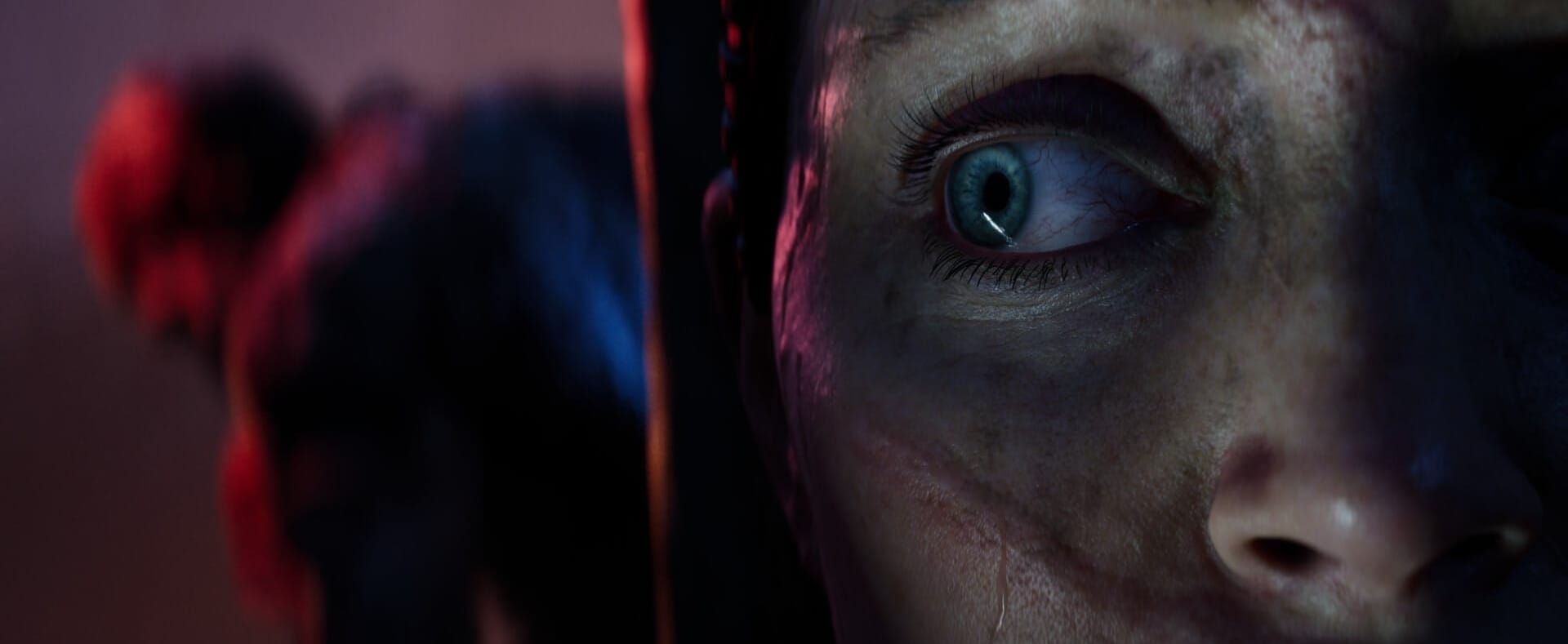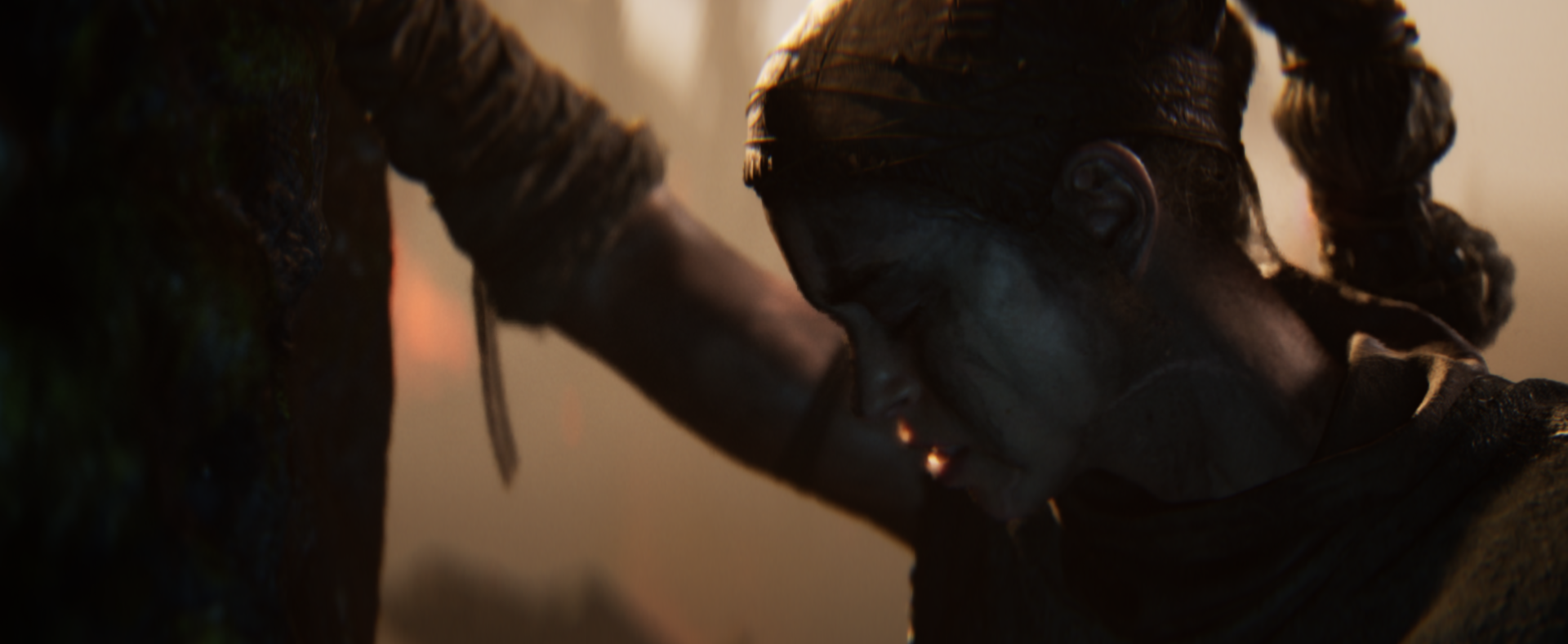Hellblade II Shows the Burden of Acceptance

Hellblade: Senua's Sacrifice by developer Ninja Theory caught people by surprise way back in 2017. Widely acclaimed as a touching story of grief and regarded as a pillar of mental health representation, it won the Game Awards prize for Best Performance, Audio Design, and Games for Impact. Seven years later, the long-awaited sequel was quietly released to the public. Senua's Saga: Hellblade II was first announced in 2019, but due to the pandemic and presumably other reasons, it took longer than anybody expected. So, is it worth the wait?

Lacking in mechanical innovation and gameplay diversity, Senua's Saga still maintains a spectacular story and bone-chilling audio design comparable to its predecessor, enough to give anybody goosebumps. Thanks to its use of Unreal Engine 5, the game flaunts breathtaking visuals and atmosphere, with well-realized Icelandic landscapes and hybrid Norse-Celtic attire. A relatively short romp compared to contemporary AAA titles, it follows the trend of indie games, carrying heavy stories of emotional depth in six hours or under.
The Sacrifice

Set in the late 8th century, Senua's story starts with her struggle dealing with inherited psychosis that came from her mother, the mental illness that caused people around her to see her as a curse and blight to the land. She hears voices inside her head, ones that confirm her self-doubt, yet also at her darkest moments, become her only friends. Because of this, her mother died at the hands of Senua's own father, burning her on a stake as a sacrifice for the gods.
This act traumatized her so much that she had to repress the memory and imagine her mother's death as suicide. Other than her mother, the only one who saw her as she was and wholly accepted her was her lover, and the first game depicted her grief over his death as well. For that, she blamed herself, just as her father taught her. Being used to alienation, she accepted that she was to blame for every death and misfortune that befell everyone she ever loved. People around her saw her as a curse, and that narrative burrowed into her heart, becoming what she truly believed.
The game ended with Senua fighting through hell for her lover's soul, the singular thing keeping her going, without realizing that it was herself who held it in place. In a metaphysical battle against the hordes of hell and its goddess, the voices in her head pushed her to the realization that she had to let go, that the alternative was an endless unwinnable battle, and that the real hell was holding on. So she listened. By moving on, she accepted all the deaths in her past, her part in them, but also her innocence. Her odyssey made her welcome her supposed curse and introduced her to a new way of seeing.
"Never forget what it is like to see the world as a child, Senua: where every autumn leaf is a work of art; every rolling cloud, a moving picture; every day a new story. We too emerge from this magic, like a wave from the ocean, only to return back to the sea. Do not mourn the waves, the leaves and the clouds. Because even in darkness the wonder and beauty of the world never leaves. It's always there, just waiting to be seen again."
The morning after

The sequel asks the question of what happens after acceptance, and the responsibility that comes with it. Senua has made peace with the loss of her lover and the psychosis she carries. But peace does not mean forgetting, and she carries the memories of her lost ones still. Now, her challenge and struggle lie in what she has to do with just the memories that remain, and what to make of peace. Without the clear direction and purpose of anger, without the emotional drive of grief, she must find her own way, and carve a path that makes sense for her. Senua has sacrificed her innocence by remembering the truth about her mother's death and her father's part in it, yet she has also reclaimed her innocence by not blaming herself for her lover's death. Now, she must make both losses worth it.
So she went to the source, the first blade that took her love away, the reason blood was shed. The second game starts with her pretending to be a slave and getting taken away by the Northmen who once came into her village and gutted her lover. While the predecessor showed Senua's personal journey of self-acceptance, the sequel shows Senua's journey in attempting to understand her worst enemy and despite their bad blood, empathize. Maybe she could make them see what she saw, and her journey need not benefit herself only. By healing herself, she could start to heal others who are similarly wounded by the world they all share.
In the course of the story, she shows mercy to the slaver who killed so many, and in the process learns about three giants that plague the land. These giants are the reason her village was raided, slaves were taken, and her lover butchered, all done as sacrifices for them. But as her psychosis is not the bane that many saw it to be, these giants are also not as they first seem. They are not as typically imposing as their name implies. The giants of Senua don't even stand up, instead, they crawl like newborns in pain.
The way Senua defeats them is also atypical. She first has to learn their names. Once known, she can begin to relate with them and figure out their pain. Senua sees through the giants' imposing size and booming cries, to the little hurt soul cradled inside. Through her eyes, they can accept their mistakes and injustices. Having them be seen and understood by an outsider, they do not have to be alone ever again. Through Senua's acceptance of them, the giants can claim peace. Like ghosts tethered to reality by guilt and grief, the presence of someone living to remember their life cuts them loose.

However, not everyone is willing to open themselves up to new perspectives. The final giant couldn't see it, he didn't want to. It is revealed at the end that the last most powerful giant is in fact the slaver's father, the tyrant who sacrifices slaves from other lands proclaiming it was to keep his people safe. As it turns out, it was all a ploy to keep himself in power and keep his people obedient. Once Senua comes to challenge his rule and show people another way of living, one of compassion, the tyrant rejects her.
She sees her own father in this tyrant, the one who also weaponized lies and fear to diminish others. Coming out of the first game, Senua could now see past the lies of narcissistic men. She saw the motive, the original sin that took everything from her, how cruelty can come from fear, and evil from control. All of it is based on a lie that is only beneficial to its teller. Even in his absence, her father still gives voice to her doubts. Once gaining cult-like followers by soothsaying, her father had used his believers to gain control and murder Senua's mother. The true giant is the lie fed to us that we believe over our own truth, the one we must learn the name of to dispel it of its power.
Only after Senua redeems the slaver by making him oppose his father, that she frees herself of the fear of becoming her own father. By seeing another inspired by her and resisting their doomed destinies, she is inspired in return, instilled with the hope that she does not have to experience the same fate as her mother or father.
While the first game is more internal, dealing with Senua and her past and the voices in her head, the second game focuses a lot more on other people. She hears their voices, how they contradict or concur with her inner voices, and how their perceptions of Senua repair her broken self-image, an image cracked from trauma and grief haphazardly corrected by a shaking hand, needing outside perspectives to keep it from being fixed crooked. Other people's belief in Senua breaks her disbelief in herself. They are the tether to her reality. They make her realize that the burden of acceptance doesn't have to be carried alone, and that her grief and psychosis mean something good when turned into a helping hand.
Living with a different way of seeing
Both Sacrifice and Saga play with what's real and what's not, juggling the inner reality of Senua's mind with the objective outer world. It makes us question if the giants are real or just metaphors. But maybe they are real to her, and that's all that matters. Senua's Saga is partly about perspective, and by seeing the world through Senua's eyes, it does not matter much if a lie looks like a giant; all that matters is the problem takes shape in whatever way people see it. Maybe through seeing things in a new light, new solutions are born; maybe tyrants do not have to exist to replace each other' maybe none of us are our mothers or fathers.
There's a part in the game where Senua disarms herself, leaving herself vulnerable, to arm her future self. She passes on her trusted blade, her only defense, to a voice in need, and that voice is her own. By answering the call to help others, she is helping herself. She learns to take the leap of faith in helping others, despite her inner voices disputing her decision, despite her fear.

Where in her younger years she is condemned for hearing voices and being different, here she is seen as special, as blessed with the ability to perceive a better path. Her compassion redeems a son not become his cruel father, ending a cycle of unnecessary violence. Monstrous giants see her as kin, recognizing the burden she carries on her shoulders, and how she was once like them. Senua uses what she has learned from her sacrifice to help others, to help those who are going through what she has gone through. The giants could not move on for one reason or another like she couldn't. So she helps them like she helped herself.
Monsters are just names we call things we fear, that we don’t understand. But through these names, we can see flawed things in a different light, as vile and dangerous. Names tell us how to see, so perhaps we need to believe in a world with kinder names, for a better way of seeing.
"All monsters were once men."
The story of Senua is twofold, about coping with her illness and what it does to the people around her, but also about being responsible with her newfound perspective, using it to show other people facing similar issues what she has learned. As she was once lost, now she leads the lost. It is about choice and agency, regaining control of your narrative, from your parents, from your illness, and your doubts. It is about the name you are given, and the one you choose for yourself.
Maybe the more dangerous and invisible darkness inside someone is not the voices you hear in your head, but the lies you remember, the abuse you bore all your life, and how that is also a responsibility you carry, to change. Senua is not her father's sins, her mother's psychosis, or the voices inside her head. She is all of this, and so much more.
